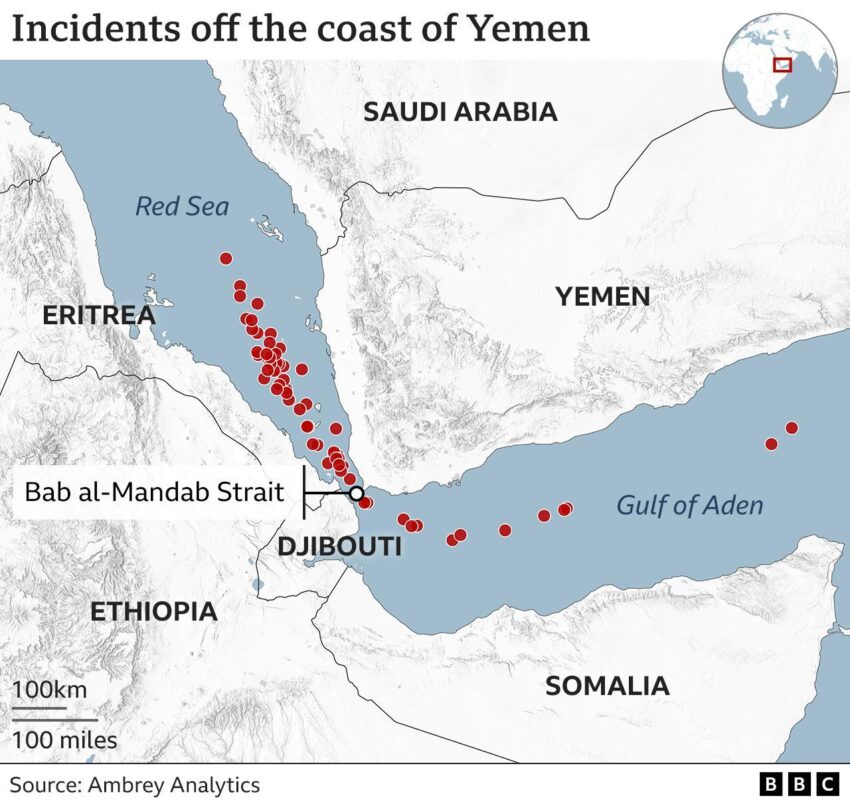Red Sea Offensive: A Strategic Response
In a significant military move, the United States has taken decisive action against Houthi targets in Yemen, marking a pivotal shift in its approach to maintaining freedom of navigation in the Red Sea. This operation not only aims to counter Houthi aggression but also sends a robust message to the US’s global adversaries, including China, Iran, and Russia, who had recently conducted a large naval exercise in the region.
Analysts emphasize that for this offensive to yield enduring results, the United States must follow up with a sustained campaign. This includes efforts to disrupt Houthi supply chains and conduct direct strikes against Iranian assets, should Houthi hostility continue.
Regional Turbulence and Coalition Dynamics
The recent military exercise, known as Maritime Security Belt 2025, conducted by Chinese, Iranian, and Russian forces in the Gulf of Oman, demonstrates an escalating power play in the region. This exercise, which borders crucial maritime chokepoints like the Strait of Hormuz and Bab el-Mandeb, was not just a simple display of military capability; it symbolized a resumption of regional security responsibilities that the US seems to have vacated.
Iran capitalized on this opportunity, showcasing its alliances and military capabilities. Notably, the deployment of Chinese warships from its naval base in Djibouti indicates increased coordination between these nations. With footage of the drills broadcast on Iranian state television, the message highlighted a future where US presence is minimal — a narrative that some of America’s regional allies may find increasingly appealing.
American Forces Reasserting Influence
In response to the growing regional threats, the US has launched a series of airstrikes against Iran-backed Houthi positions, totaling over 85 strikes in just three days. Additionally, the deployment of a second carrier strike group underscores America’s commitment to maintaining stability in the Middle East. This show of force aims to reassure allies and deter adversaries, reinforcing the US’s role as a key player in regional security.
To capitalize on this momentum, US officials must commit to extended pressure on Houthi operations, ensuring that their aggression does not threaten maritime trade routes and weaken US credibility. The consequences of inaction could weaken trust in American resolve and embolden other nations to undermine US interests globally.
Maintaining Operational Pressure
The ongoing campaign against the Houthis requires a targeted approach, focusing on disrupting command and control structures, communication networks, and logistic operations. US leaders stress the importance of maintaining this campaign indefinitely until there is a substantial reduction in Houthi hostilities.
Furthermore, strengthening partnerships with European nations for enhanced maritime interdiction and intelligence sharing is crucial. This collaboration will help mitigate Houthi rearmament and contribute to regional stability. Maintaining accountability for Iran’s role in supporting Houthi actions is equally essential, as evidence continues to mount connecting Tehran to the Houthis’ military activities.
Consequences of Inaction
As the situation evolves, the US must project a willingness to respond decisively to continued Houthi aggression. Any attack on American interests, allies, or global shipping must prompt a strong military response targeting Iranian assets involved in Houthi support.
Failing to appropriately address Houthi provocations could pave the way for diminished US influence, which would likely embolden adversaries worldwide. It’s critical for the US to reaffirm its commitment to protecting its interests in the Middle East to avoid sending signals of weakness or indecision to both allies and adversaries.







